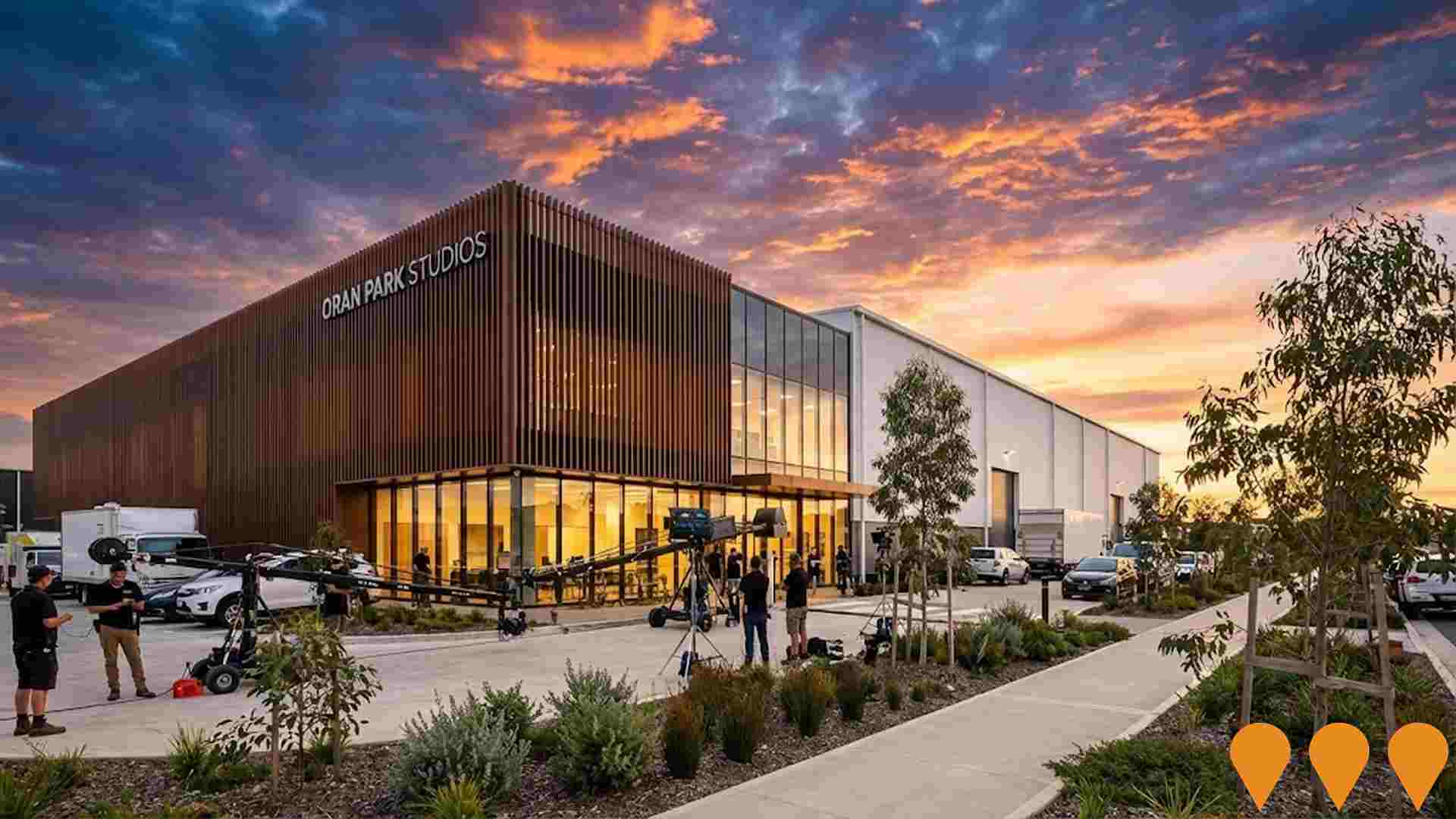Chart Color Schemes
est. as @ -- *
ABS ERP | -- people | --
2021 Census | -- people
Sales Activity
Curious about local property values? Filter the chart to assess the volume and appreciation (including resales) trends and regional comparisons, or scroll to the map below view this information at an individual property level.
Find a Recent Sale
Sales Detail
Population
Oran Park lies within the top 10% of areas nationally in terms of population growth performance according to AreaSearch analysis of short and medium-term trends
Oran Park's population is 25,965 as of Aug 2025. This reflects a 47.3% increase since the 2021 Census, which reported a population of 17,624 people. The change is inferred from ABS estimates of 24,055 in June 2024 and an additional 1,500 validated new addresses since the Census date. This results in a density ratio of 1,959 persons per square kilometer, above national averages according to AreaSearch's assessments. Oran Park's growth exceeded both state (6.4%) and metropolitan area figures, making it a regional growth leader. Interstate migration contributed approximately 75.6% of overall population gains during recent periods, with all drivers being positive factors.
AreaSearch adopts ABS/Geoscience Australia projections for each SA2 area, released in 2024 with 2022 as the base year. For areas not covered by this data, NSW State Government's SA2 level projections are used, released in 2022 with 2021 as the base year. Growth rates by age group from these aggregations are applied to all areas for years 2032 to 2041. Future population dynamics predict exceptional growth, placing Oran Park in the top 10 percent of statistical areas nationally. By 2041, the area is expected to increase by 17,411 persons, with a total increase of 59.7% over the 17 years.
Frequently Asked Questions - Population
Development
The level of residential development activity in Oran Park was found to be higher than 90% of real estate markets across the country
Oran Park has recorded approximately 564 residential properties granted approval annually. Over the past five financial years, from FY21 to FY25, a total of 2823 homes were approved, with an additional 294 approved so far in FY26. On average, over these five years, 4.2 people moved to Oran Park for each dwelling built.
This supply lagging demand has led to heightened buyer competition and pricing pressures. New homes are being constructed at an average value of $486,000, aligning with broader regional development trends. In FY26, there have been $174.8 million in commercial approvals, indicating robust local business investment. Compared to Greater Sydney, Oran Park has 76.0% more construction activity per person, offering greater choice for buyers despite a recent slowdown in building activity. This high level of activity reflects strong developer confidence in the area. New development consists of 59.0% detached houses and 41.0% townhouses or apartments, shifting from the existing housing stock which is currently 87.0% houses.
With around 54 people per dwelling approval, Oran Park exhibits characteristics of a growth area. Future projections estimate an addition of 15,501 residents by 2041. Based on current development patterns, new housing supply should meet demand, providing favorable conditions for buyers and potentially facilitating population growth beyond current projections.
Frequently Asked Questions - Development
Infrastructure
Oran Park has very high levels of nearby infrastructure activity, ranking in the top 10% nationally
Infrastructure changes significantly impact an area's performance. AreaSearch identified 39 projects likely affecting the region. Notable ones include Sydney Metro West - Western Sydney Airport to Macarthur Corridor (South West Rail Link Extension), Atura Oran Park, Gledswood Hills Masterplanned Community, and Marian's Mana Urban Village. The following list details those most relevant.
Professional plan users can use the search below to filter and access additional projects.
INFRASTRUCTURE SEARCH
 Denotes AI-based impression for illustrative purposes only, not to be taken as definitive under any circumstances. Please follow links and conduct other investigations from the project's source for actual imagery. Developers and project owners wishing us to use original imagery please Contact Us and we will do so.
Denotes AI-based impression for illustrative purposes only, not to be taken as definitive under any circumstances. Please follow links and conduct other investigations from the project's source for actual imagery. Developers and project owners wishing us to use original imagery please Contact Us and we will do so.
Frequently Asked Questions - Infrastructure
Sydney Metro West - Western Sydney Airport to Macarthur Corridor (South West Rail Link Extension)
Proposed north-south extension of the Sydney Metro network from the future St Marys station (Sydney Metro Western Sydney Airport line) through Bradfield, Oran Park, Narellan and Campbelltown to Macarthur. This corridor is being preserved to enable a future metro passenger rail link supporting growth in South West Sydney and connectivity to Western Sydney International Airport.

Oran Park Health Precinct Stage 3
Stage 3 of the Oran Park Health Precinct will deliver a 6,000sqm purpose-built medical facility featuring day surgery, oncology, chemotherapy, dialysis, radiology, pathology and specialist consulting suites. Developed by Greenfields Development Company in partnership with specialist healthcare operators, it forms part of the broader vision for a full-service private hospital campus serving Sydney's fast-growing South West Growth Area.

Oran Park Town
Oran Park Town is a major masterplanned community in Sydney's South West Growth Area, being delivered jointly by Greenfields Development Company (Dart West) and Landcom. Located on the former Oran Park Raceway site, the 1,100+ hectare precinct (380 ha initial release) will ultimately deliver approximately 10,000 homes for around 35,000 residents. The development includes a thriving town centre with Coles, Woolworths, Event Cinemas and over 100 specialty stores, new primary and high schools, Catherine Park private school, sporting precincts, over 60 ha of parks and open space, and extensive community facilities. Construction continues with multiple residential builders active and further commercial/town centre expansions underway.
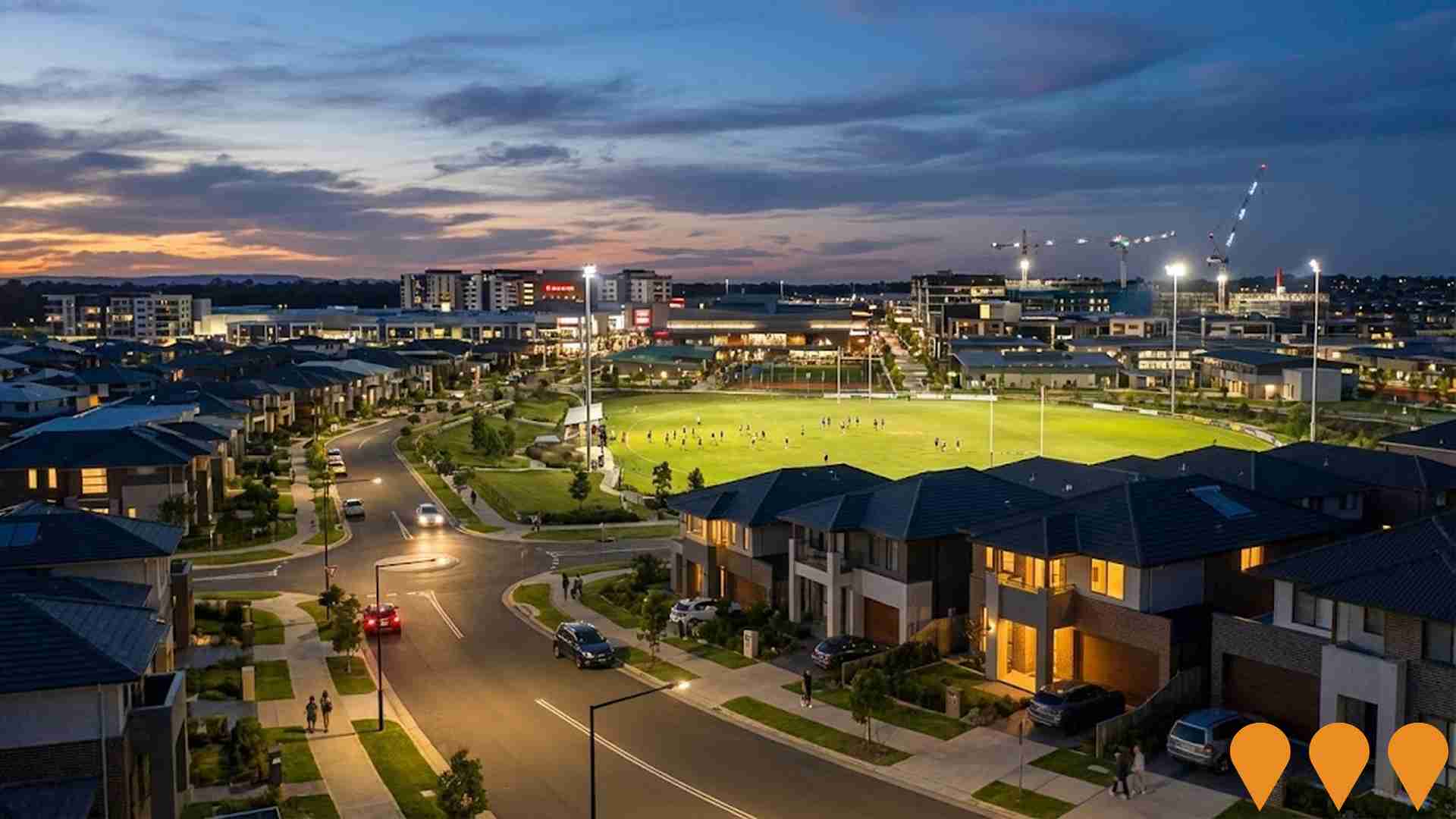
Harrington Grove Estate
Harrington Grove is a master-planned residential community located in the Macarthur region of Sydney. Developed by Harrington Estates, the estate spans a large area and is designed around a central golf course and extensive conservation areas. It features a variety of housing, three country clubs, community facilities, and schools. The project has been developed over many years and is now considered complete, with a focus on community life within the established estate.
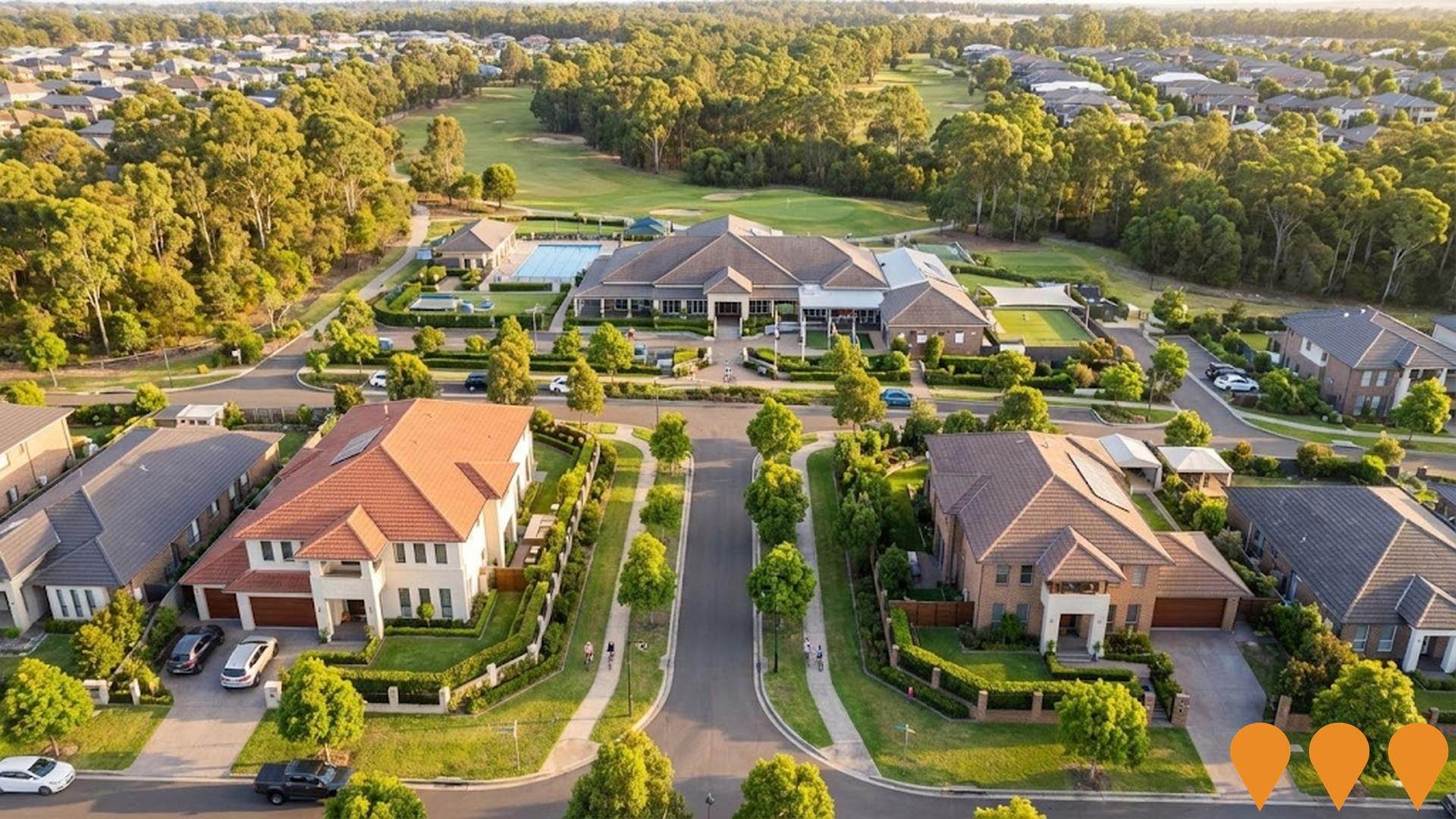
Pondicherry Precinct
The Pondicherry Precinct is a 242-hectare extension to Oran Park, accommodating up to 8,830 residents across up to 4,200 lots. Rezoned in June 2025, it features low and medium density residential areas, a neighbourhood centre, public recreation spaces including a lake and wetlands, district sports facilities, a school, local shops, community facilities, roads, and drainage infrastructure. Development contributions exceed $205 million under a Voluntary Planning Agreement.
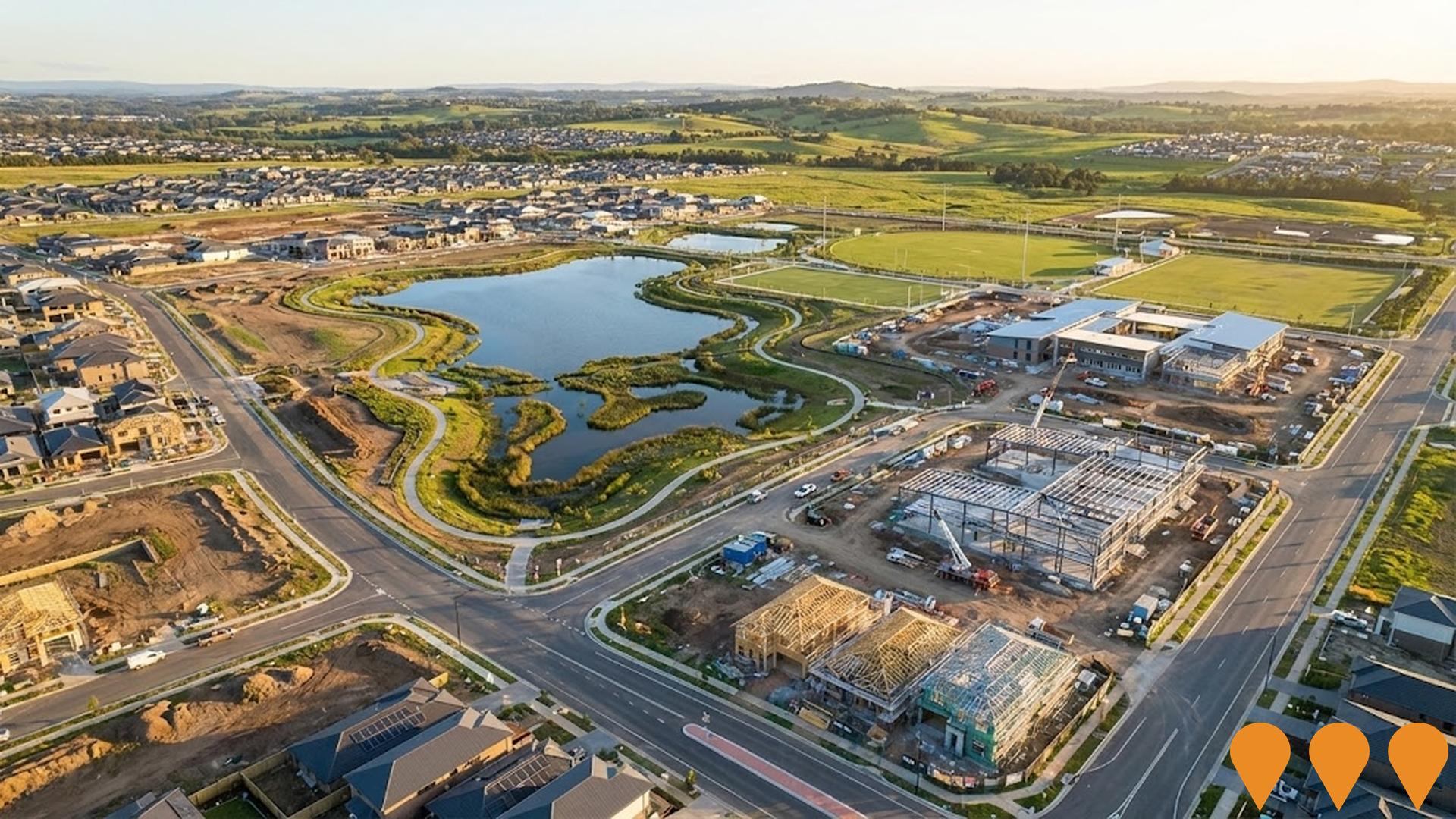
Oran Park Podium Shopping Centre Stage 2 Expansion
Stage 2 expansion of Oran Park Podium shopping centre, completed and opened in March 2024. Added approximately 16,700 sqm of retail space, a new Coles supermarket, over 60-65 specialty stores, a rooftop childcare centre (1,800 sqm), outdoor dining precinct, children's playground (1,200 sqm), and over 1,000 additional undercover parking spaces. The centre grew from 9,000 sqm to approximately 29,000 sqm total, serving as the primary retail and community hub for the rapidly growing Oran Park Town precinct.
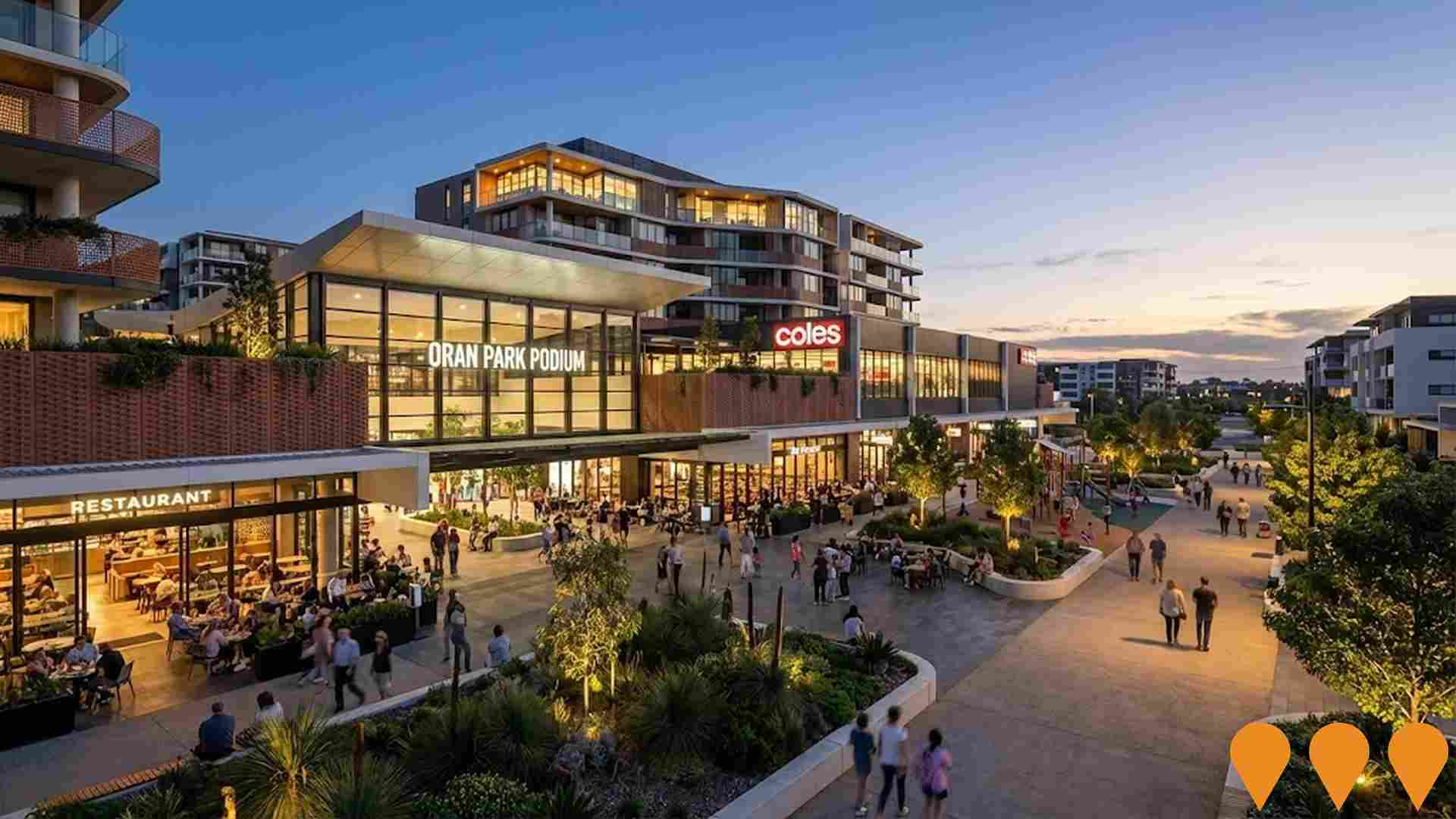
Atura Oran Park
184-room urban lifestyle hotel developed by Greenfields Development Company in partnership with EVT, operated under the Atura Hotels brand. Features include 184 design-led rooms, conference and meeting facilities, an outdoor pool and terrace, a locally inspired restaurant and bar. Part of the Oran Park Town Centre expansion including new retail and restaurants. Construction commenced in November 2024 with expected opening in 2026.
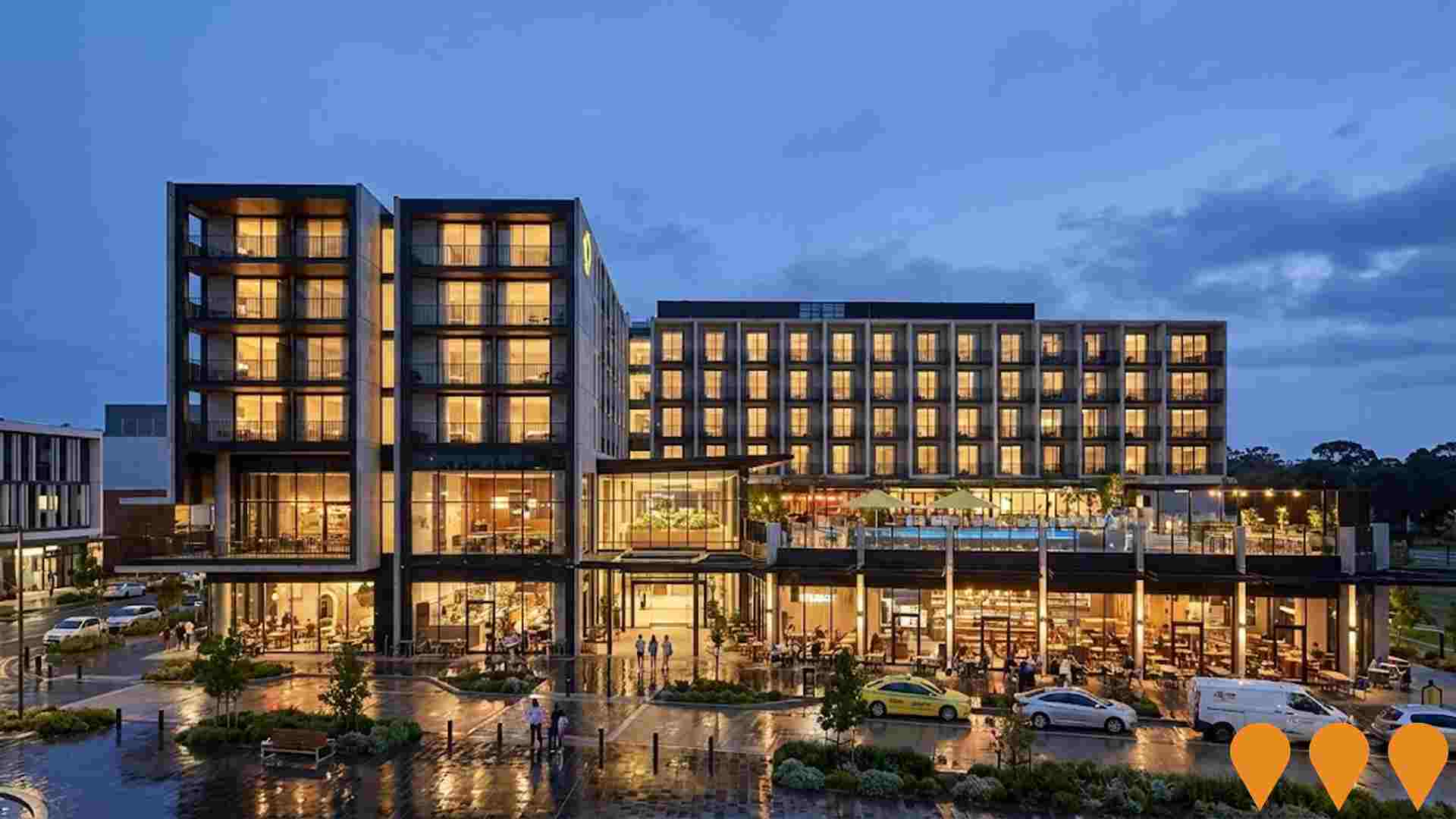
Gledswood Hills Masterplanned Community
A major 320-hectare masterplanned community by Sekisui House featuring over 1,550 contemporary dwellings and 375 apartments. The development includes premium SHAWOOD homes, 40 hectares of landscaped parklands, 50km of cycle paths, Gledswood Hills Primary School, two golf courses including a Greg Norman-designed course, and The Yards retail village. The project incorporates the Japanese 'satoyama' concept with ribbons of green connecting people and nature.

Employment
AreaSearch analysis of employment trends sees Oran Park performing better than 90% of local markets assessed across Australia
Oran Park has a highly educated workforce with significant representation in essential services sectors. Its unemployment rate was 1.9% as of June 2025, lower than Greater Sydney's 4.2%.
Employment grew by an estimated 4.8% over the past year. As of June 2025, 13,985 residents were employed with a workforce participation rate of 70.2%, higher than Greater Sydney's 60.0%. Dominant employment sectors include health care & social assistance, construction, and retail trade. Oran Park has a particular specialization in construction, with an employment share 1.5 times the regional level.
However, professional & technical services employ only 5.8% of local workers compared to Greater Sydney's 11.5%. Employment opportunities locally may be limited as indicated by Census data comparing working population and resident population. Between June 2024 and June 2025, employment increased by 4.8%, labour force grew by 4.9%, resulting in a slight rise in unemployment to 2.3%. In comparison, Greater Sydney recorded employment growth of 2.6% with unemployment rising to 4.5%. Jobs and Skills Australia's national employment forecasts from May 2025 suggest that Oran Park's employment could grow by approximately 6.5% over five years and 13.5% over ten years, based on industry-specific projections applied to the local employment mix.
Frequently Asked Questions - Employment
Income
Income metrics indicate excellent economic conditions, with the area achieving higher performance than 75% of national locations assessed by AreaSearch
Oran Park's median income among taxpayers was $61,100 in financial year 2022. The average income stood at $74,902 during the same period. These figures compare to Greater Sydney's median and average incomes of $56,994 and $80,856 respectively. By September 2025, based on Wage Price Index growth of 12.61%, estimated median income would be approximately $68,805 and average income around $84,347. Census data shows household, family, and personal incomes in Oran Park rank highly nationally, between the 81st and 86th percentiles. The predominant income bracket is $1,500 - 2,999, with 42.6% of locals (11,061 people) falling into this category. This aligns with the metropolitan region where this cohort represents 30.9%. Higher earners, those exceeding $3,000 weekly, make up a substantial presence at 32.3%, indicating strong purchasing power within the community. High housing costs consume 22.5% of income, but strong earnings place disposable income at the 76th percentile nationally. The area's SEIFA income ranking places it in the 8th decile.
Frequently Asked Questions - Income
Housing
Oran Park is characterized by a predominantly suburban housing profile, with a higher proportion of rental properties than the broader region
Oran Park's dwelling structure, as per the latest Census, consisted of 87.2% houses and 12.8% other dwellings (semi-detached, apartments, 'other' dwellings). This compared to Sydney metro's 89.6% houses and 10.4% other dwellings. Home ownership in Oran Park stood at 8.2%, with the rest being mortgaged (55.3%) or rented (36.5%). The median monthly mortgage repayment was $2,626, higher than Sydney metro's average of $2,475. Median weekly rent in Oran Park was $530, compared to Sydney metro's $490. Nationally, Oran Park's mortgage repayments were significantly higher at $1,863 and rents substantially above the national figure of $375.
Frequently Asked Questions - Housing
Household Composition
Oran Park features high concentrations of family households, with a lower-than-average median household size
Family households account for 87.3% of all households, including 54.5% couples with children, 19.7% couples without children, and 12.3% single parent families. Non-family households make up the remaining 12.7%, with lone person households at 11.0% and group households comprising 1.7% of the total. The median household size is 3.3 people, which is smaller than the Greater Sydney average of 3.4.
Frequently Asked Questions - Households
Local Schools & Education
The educational profile of Oran Park exceeds national averages, with above-average qualification levels and academic performance metrics
The area's educational profile is notable, with university qualification rates of 29.7% among residents aged 15+, surpassing the SA4 region average of 21.4%. Bachelor degrees are most common at 20.0%, followed by postgraduate qualifications (8.0%) and graduate diplomas (1.7%). Vocational credentials are also prevalent, with 35.1% of residents aged 15+ holding such qualifications - advanced diplomas at 12.2% and certificates at 22.9%.
Educational participation is high, with 34.1% of residents currently enrolled in formal education. This includes 14.0% in primary education, 7.4% in secondary education, and 4.6% pursuing tertiary education. Six schools operate within Oran Park, educating approximately 7,187 students, with typical Australian school conditions (ICSEA: 1042) indicating balanced educational opportunities. The educational mix includes three primary, two secondary, and one K-12 school. School capacity exceeds residential needs, with 27.7 places per 100 residents compared to the regional average of 19.1, suggesting Oran Park serves as an educational hub for the broader region.
Frequently Asked Questions - Education
Schools Detail
Nearby Services & Amenities
Transport
Transport servicing is low compared to other areas nationally based on assessment of service frequency, route connectivity and accessibility
The transport analysis indicates that Oran Park has 43 active public transport stops, all of which are bus stops. These stops are served by 50 individual routes, collectively facilitating 1,862 weekly passenger trips. The accessibility of the transport system is rated as good, with residents typically located 276 meters from their nearest stop.
On average, service frequency reaches 266 trips per day across all routes, translating to approximately 43 weekly trips per individual stop.
Frequently Asked Questions - Transport
Transport Stops Detail
Health
Oran Park's residents boast exceedingly positive health performance metrics with common health conditions somewhat prevalent across both younger and older age cohorts
Oran Park's health outcomes show notable results, with common conditions prevalent across both younger and older age groups. Approximately 57% (~14,826 people) have private health cover, higher than Greater Sydney's 52.5%.
Asthma and mental health issues are most common, affecting 6.7% and 5.6% respectively. About 80.8% report no medical ailments, compared to 77.9% in Greater Sydney. Oran Park has 6.1% (1,589 people) aged 65 and over, lower than Greater Sydney's 10.1%. Health outcomes among seniors require more attention than the broader population.
Frequently Asked Questions - Health
Cultural Diversity
Oran Park is among the most culturally diverse areas in the country based on AreaSearch assessment of a range of language and cultural background related metrics
Oran Park's population shows high cultural diversity, with 35.4% born overseas and 40.8% speaking a language other than English at home. Christianity is the predominant religion in Oran Park, comprising 54.6%. Hinduism is overrepresented compared to Greater Sydney, making up 10.2% versus 5.2%.
The top three ancestry groups are Other (25.7%), Australian (18.2%), and English (15.0%). Notable divergences exist in Serbian (1.1% vs regional 1.9%), Maltese (2.1% vs 2.0%), and Samoan (1.3% vs 1.5%) representation.
Frequently Asked Questions - Diversity
Age
Oran Park hosts a very young demographic, ranking in the bottom 10% of areas nationwide
Oran Park has a median age of 30 years, which is younger than Greater Sydney's average of 37 years and the Australian median of 38 years. Compared to Greater Sydney, Oran Park has a higher proportion of residents aged 5-14 years (19.3%) but fewer residents aged 55-64 years (5.3%). This concentration of 5-14 year-olds is significantly higher than the national average of 12.2%. According to data from the 2021 Census, Oran Park's population has shifted since then: the 35-44 age group has grown from 19.1% to 21.6%, while the 5-14 cohort increased from 17.5% to 19.3%. Conversely, the 25-34 age group has decreased from 20.5% to 15.2%, and the 0-4 age group has dropped from 12.5% to 10.1%. Demographic projections suggest that Oran Park's age profile will change significantly by 2041, with the 15-24 age cohort expected to grow substantially, increasing by 3,922 people (125%) from 3,133 to 7,056.

